Globalization is a complex concept that can be difficult for adults to fully comprehend, let alone children. However, it’s important to teach children about the world around them and how different countries and cultures are connected. It’s never too early to start teaching kids about globalization, and with the right approach, they can understand this important concept in a way that is meaningful to them.
In this section, we will provide you with simple tips and tricks to help you explain globalization to a child. By breaking down this topic into easy-to-understand concepts, you can help your child develop a global perspective that will serve them well in life.
Key Takeaways:
- Globalization can be difficult to explain to children, but it’s important to teach them about the interconnectedness of the world.
- With the right approach, you can help your child understand globalization in a way that is meaningful to them.
- Breaking down the concept into easy-to-understand concepts can help your child develop a global perspective.
What is Globalization?
Globalization can be a tricky concept to understand, especially for children. So, how can you explain it in a way that they will grasp? At its core, globalization is the process of increased connection and integration between different countries and cultures around the world. This means that people, products, and ideas are now able to move more freely between different parts of the globe than ever before.
Think about it this way – have you ever used a product that was made in another country? Maybe you own a toy that was made in China or a shirt that was made in Bangladesh. This is globalization in action – the ability to trade goods across long distances. Advances in technology have made it possible to move goods around the world in a matter of days or weeks, which has opened up new markets and opportunities for businesses and consumers alike.
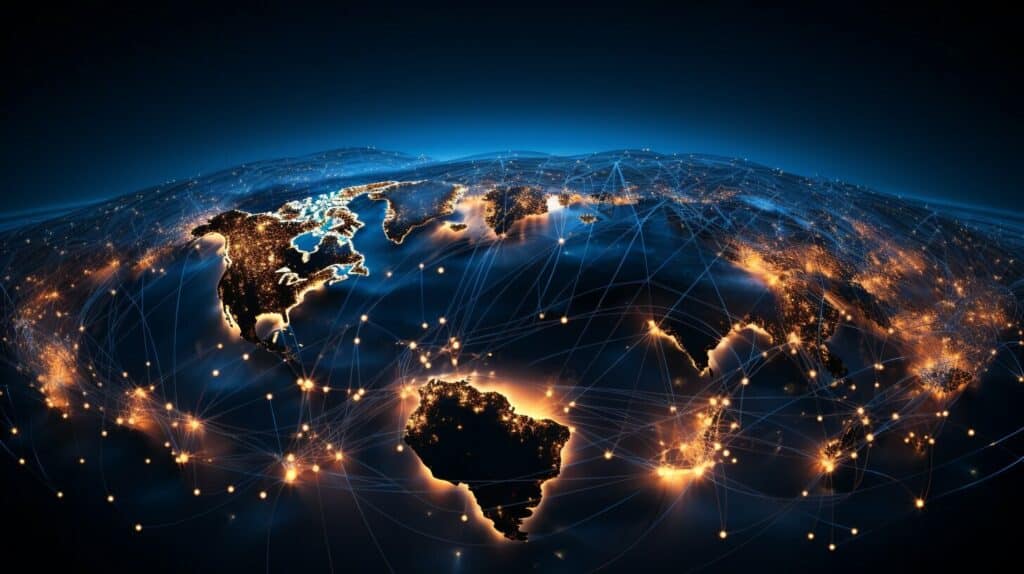
Another aspect of globalization is travel. People are now able to travel more easily between countries, thanks to advances in transportation technology, such as planes and high-speed trains. This means that you can now visit places and meet people from all over the world, experiencing new cultures and ways of life.
Overall, globalization is a complex phenomenon, but at its most basic level, it means that the world is becoming more interconnected. In the next sections, we will explore different aspects of globalization in more detail, to give you a better understanding of this important concept.
Global Interconnection through Trade and Travel
Globalization has made it easier for us to travel and has increased trade around the world. Products from different countries are available in most stores, no matter where you live! Even the food we eat has a global connection, with ingredients coming from different parts of the world.
Traveling is also easier than ever before. You can visit a different country in just a few hours by taking a plane. This allows people to experience other cultures and ways of life, and learn new things.
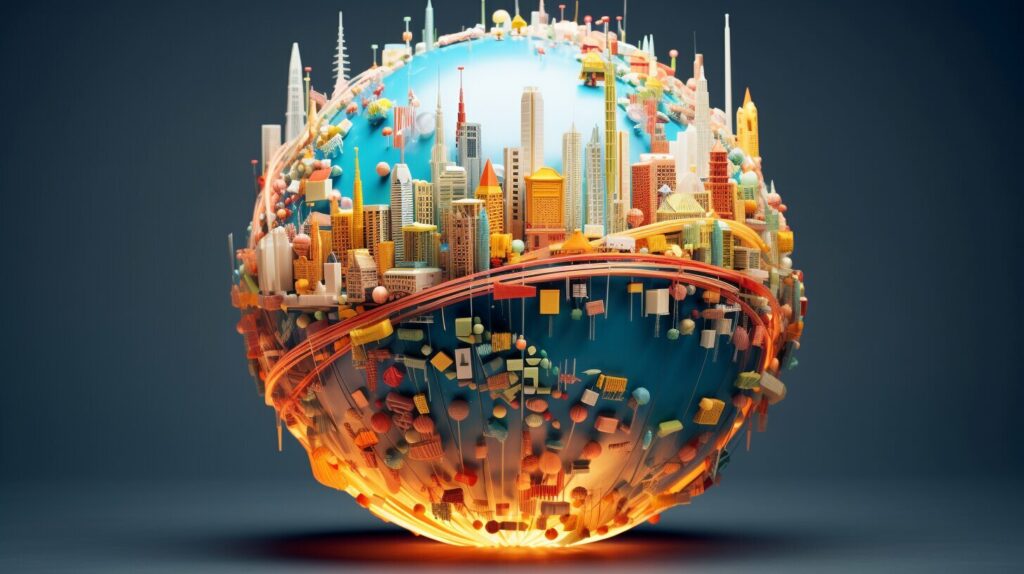 Image source: seowriting.ai
Image source: seowriting.ai
However, it’s important to understand that increased travel and trade comes with some downsides too. For example, it can contribute to pollution and environmental degradation. That’s why it’s important to be mindful of our impact on the environment and take steps to reduce it.
Cultural Exchange and Diversity
Globalization isn’t just about economics and trade. It’s also about cultural exchange and diversity. Thanks to globalization, we have access to different cultures from all over the world.
For example, you can find Mexican food in the United States, and American fast food restaurants in Japan. Products from different parts of the world are available in stores near you, allowing you to try new foods and learn about different cultures.
This exchange of culture isn’t just limited to food. You can also experience different music, art, and fashion styles from around the world.
Embracing cultural exchange and diversity is an important part of being a global citizen. It allows us to appreciate and respect different cultures and helps us to understand that we have more in common than we think.

“The world is a book and those who do not travel read only one page.” – Saint Augustine
Global Communication and Technology
Thanks to globalization, communication and technology have come a long way. In the past, it was much more difficult to connect with people from different parts of the world, but now we can do it easily through tools like the internet, smartphones, and social media. This has made the world a smaller and more interconnected place.
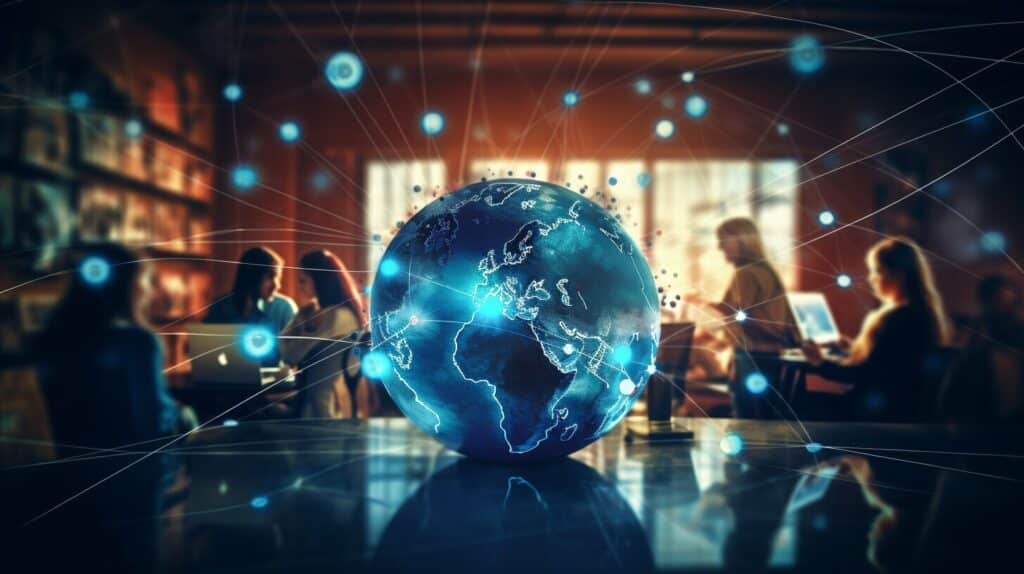
With just a few clicks, you can talk to someone on the other side of the world, share information, and learn new things. This has opened up a world of opportunities for people to learn about different cultures and connect with others who share similar interests.
Another way technology has impacted globalization is through e-commerce, which allows us to buy and sell products from anywhere in the world. Now, you can order items from different countries and have them delivered to your doorstep.
However, it’s important to note that some people don’t have access to this technology and are left behind. This is known as the digital divide, which is a global issue that needs to be addressed.
Overall, communication and technology have played a huge role in globalization, making it easier for us to connect with people from all over the world and learn about different cultures.
Positive and Negative Effects of Globalization
Globalization has a significant impact on our world, bringing both positive and negative effects. Understanding these effects is crucial to comprehending the impact of globalization on our lives. Here are some of the positive and negative effects of globalization that you should know:
| Positive Effects | Negative Effects |
|---|---|
| Globalization increases economic growth and creates job opportunities, leading to lower unemployment rates. | Globalization can lead to environmental damage due to increased production and industrialization. |
| Globalization allows for the exchange of ideas and knowledge, leading to innovation and progress. | Globalization can lead to cultural homogenization, resulting in the loss of unique cultural identities. |
| Globalization increases access to goods and services from all over the world, allowing people to have a wider variety of choices. | Globalization can lead to increased inequality, as some countries benefit more than others. |
It’s important to note that while globalization can have a positive impact, it can also bring negative consequences. By being aware of these effects, we can work towards addressing and mitigating them.

Source: seowriting.ai
Global Issues and Solutions
Globalization has brought about many positive changes, but it has also led to challenges that affect everyone around the world. As a child, it can be difficult to understand the global issues that we face, such as climate change, poverty, and health. However, it is important to recognize these challenges and work together to find solutions.
| Global Issue | Solution |
|---|---|
| Climate change | Reducing carbon emissions, transitioning to renewable energy sources, and implementing sustainable practices |
| Poverty | Investing in education, providing job opportunities, and increasing access to basic necessities |
| Health | Improving healthcare systems, increasing access to healthcare, and investing in research and development of treatments and vaccines |
These solutions are not easy, and they require the participation and cooperation of countries around the world. Governments, organizations, and individuals all have a role to play in creating a better world.
As a global citizen, you have a responsibility to be part of the solution. You can take action by making small changes in your everyday life, such as reducing your carbon footprint, donating to charities that support poverty alleviation and health initiatives, and being an advocate for change.
Remember, by working together, we can create a better world for ourselves and future generations.
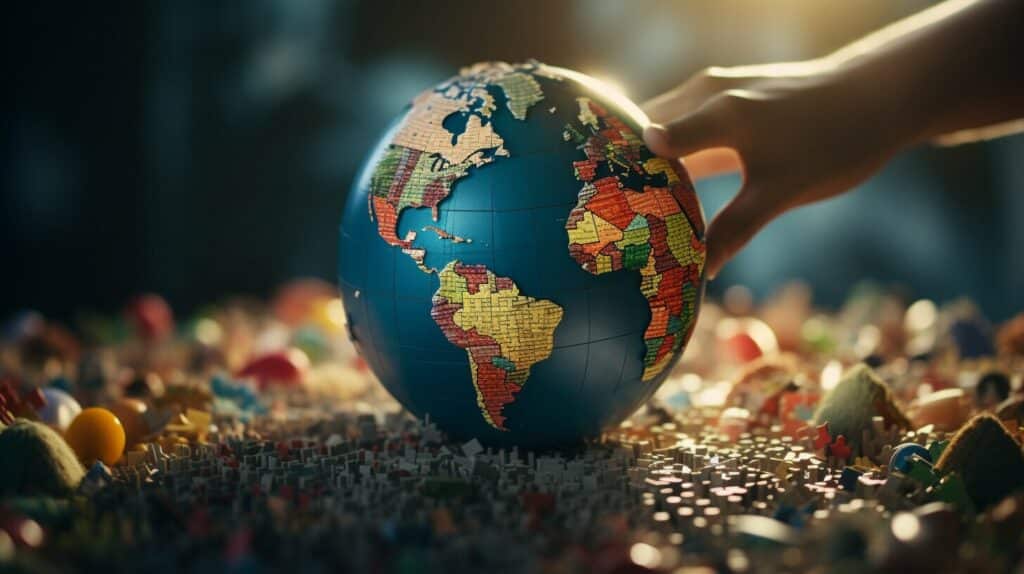
Emphasizing Interconnectedness and Responsibility
As you explain globalization to your child, it’s important to emphasize the interconnectedness between people and countries around the world. Help them understand that our actions, whether big or small, can have an impact on others globally. Encourage them to think about the choices they make and how they can contribute positively to the world.
One way to encourage a sense of responsibility is by discussing the concept of global citizenship. Help your child understand that they are citizens of not just their own country, but the world as a whole. Encourage them to think about how they can contribute to making the world a better place, whether it be through volunteering, recycling, or simple acts of kindness.
It’s also important to discuss the challenges that come with globalization, such as inequality and environmental impact. Help your child understand that these are global issues that we all need to work together to address. By teaching them the importance of responsibility and compassion, you can help them become global citizens who are equipped to make a positive impact in the world.
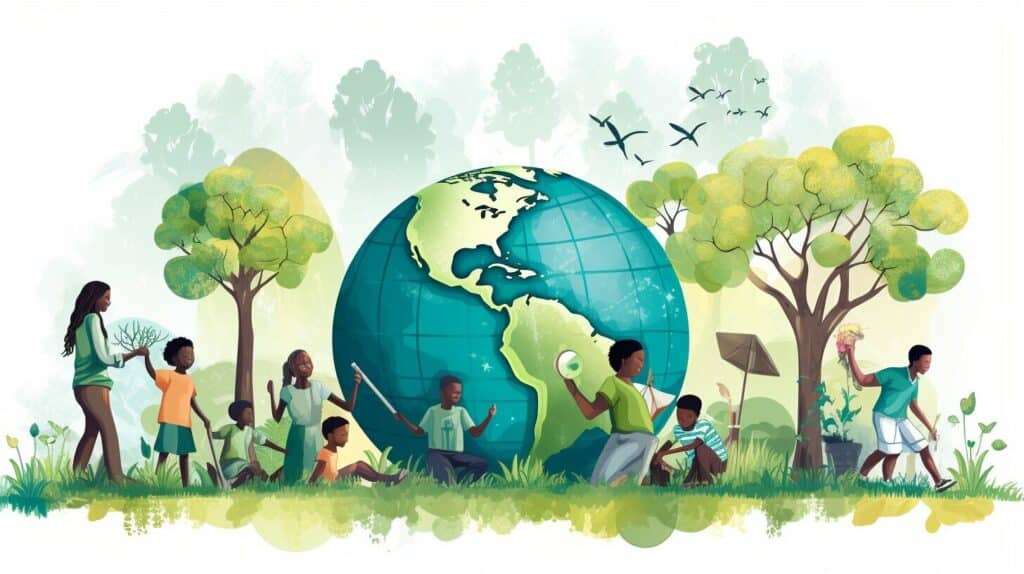
Conclusion
Explaining globalization to a child might seem challenging, but with these simple tips and tricks, it can be made easier for them to understand. Remember to define globalization in a way they can comprehend and emphasize how it involves the connection and integration of different countries and cultures around the world.
Highlight the global interconnection through travel and trade, the cultural exchange and diversity, and the importance of global communication and technology. Discuss the positive and negative aspects of globalization, including its impact on the environment and inequality.
It’s essential to emphasize the concept of global citizenship and interconnectedness while discussing global solutions and issues. Encourage children to see themselves as part of a global community and to take responsibility for creating a better world through their actions.
Use these tips to teach your child about globalization, and help them understand the importance of being a global citizen. It is vital that we raise a generation that recognizes the interconnectedness of the world and is capable of creating positive change.
Can I Use the Same Simple Tips & Tricks to Explain SQL to a Child?
When it comes to teaching SQL to a child, easy lessons for explaining sql are essential. By breaking down complex concepts into simple terms, children can grasp the fundamentals of this programming language. Creating relatable examples and using interactive activities can make learning SQL an enjoyable and accessible experience for young learners.
Can I Use the Same Approach to Explain Globalization to a Child as I Would for Reproduction?
Explaining globalization to a child using the same approach as one would for reproduction is unadvisable. While a simple guide to child reproduction might aid a child’s understanding of the biological process, it is unrelated to the complex concept of globalization. The latter involves the interconnectedness of countries, economies, and cultures, which necessitates a different approach tailored to the child’s level of comprehension.
FAQ
Q: How can I explain globalization to a child?
A: Explaining globalization to a child can be done by simplifying the concept and using relatable examples. You can describe it as the connection and integration of different countries and cultures around the world. It is like when you see products from different countries in stores or when people can travel easily to other countries.
Q: What does globalization mean?
A: Globalization means the connection and integration of different countries and cultures around the world. It involves the exchange of goods, ideas, and people between countries, making the world more interconnected.
Q: How does globalization affect us?
A: Globalization affects us in many ways. It allows us to learn about different cultures, try new foods, and appreciate diversity. It also makes communication easier through technology, such as the internet and smartphones. However, globalization can also have positive and negative effects, including economic growth and challenges like environmental impact and inequality.
Q: What are some global issues that globalization helps address?
A: Globalization helps address global issues such as climate change, poverty, and health. Countries work together through organizations like the United Nations and global agreements to find solutions to these problems.
Q: Why is it important to understand our interconnectedness?
A: Understanding our interconnectedness is important because it helps us realize that our actions can have an impact on others around the world. It promotes the concept of global citizenship and encourages us to take responsibility for creating a better world.






